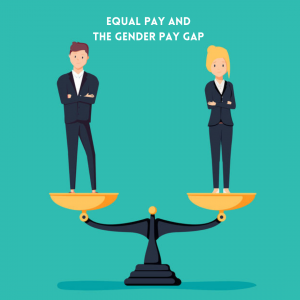The first Equal Pay Act was enacted in 1970 when employers often openly paid women less than men for doing the same job and reserved certain (usually better paid) jobs for only men. Progress has been made in the 50 years since then, but statistics show that a difference of between 12 and 21% still exists between hourly rates for men and women in the UK.
The Guardian reported on 14th October 2020 that when it comes to reporting gender pay gaps, the UK is lagging behind.
In the UK, only employers with 250 or more employees (either public or private sector) are required to submit an action plan for tackling pay gaps. It’s good news that of these, all tend to comply with the requirement, but critics say that the requirement should also apply to smaller employers. Compared with other countries, the 250 employees’ threshold is way above the average of 50 employees, plus, the requirement has been suspended during Covid.
The high threshold means that issues of unequal pay by employers could be going undetected in many small and medium businesses, and small and medium employers may not be aware they are at risk of claims.
For employers, what are your legal obligations under the Equal Pay Act 2010? How you can check you are complying, and not at risk of a claim?
The Equal Pay Act 2010 (EPA) is about men and women receiving equal pay for equal work. It implies an “equality clause” into a woman’s contract of employment, the effect of which is to replace her less favourable terms with the more favourable terms of the contract of a man that is doing equal work. (It can also apply in reverse, although most EPA claims are by women). This does not just include pay, it includes all terms, but most claims relate to pay.
The equality clause applies where the woman is employed on equal work to that of a man in the same employment. Equal work is like work and work rated as equivalent or of equal value. It raises the benefits in her contract to the same standard as her comparator.
It is not always straightforward to decide what is like work/work of equal value and to find an appropriate “comparator” employee of the opposite sex. (Maternity cases don’t need a comparator). See more below on comparators.
An employer cannot use an overall picture of the benefits the woman receives, for example, argue that they receive lower pay than the comparator male employee but receive more holidays and a company car; each separate term must be considered. However, when it comes to pay clauses, basic pay and things like bonuses would usually be considered together.
The EPA also includes provisions to protect women’s pay in pregnancy and on maternity leave. A woman cannot claim to be paid the same as a comparator man while she is on maternity leave, but for example, she is entitled to the benefit of pay rises, and to receive bonuses. It implies a maternity equality clause.
Claims by employees can be brought in the employment tribunal, but also in the civil courts. As with other court and tribunal claims, there are strict time limits. In a successful case, the tribunal/court can make a declaration of the claimant’s rights under the equality clause, require payment of any pay arrears, or damages (where the term is not about pay). Unlike sex discrimination claims, there is no award for injury to feelings.
The Claimant must be employed, including part-time, temporary, or casual employment, or on a contract of apprenticeship. It also applies to Workers under EU Law.
There can be overlap between an EPA claim and a sex discrimination claim, or a claim under part-time or fixed-term workers’ legislation, and employers should be aware of the risk of all. The EPA certainly covers basic pay, automatic pay progression, sick pay, hours of work, paid holidays, performance-related pay and benefits, overtime, and non-discretionary bonuses.
When is different pay justified?
Where pay is affected by-laws regulating the employment of women or their appointment to office, where terms give special treatment to women in connection with pregnancy or childbirth, in the terms of pension schemes in some cases, or where the Material Factor Defence applies (see below)
Comparators
The comparator must be the opposite gender and can be a current or previous employee, including a predecessor in the claimant’s own job. They must have been working “in the same employment”, and they must be an actual employee, not a hypothetical one. There can be more than one, but it is not recommended to compare with too many. The comparator does not need to be doing the particular type of work done by the claimant. It can be “like work”, which is the same or broadly similar considering the skills and knowledge needed. It can also be “rated as equivalent” in a job evaluation study done by the employer which rates it equivalent in terms of demands on the worker. And/or it can be “of equal value” which is equal (or greater) in terms of the demands made on the claimant and her comparator using factors of effort, skill, and decision-making. A tribunal would usually ask an expert to report on the two jobs being compared.
This can be quite a complicated aspect of an EPA claim. If employers consider they are at risk of a claim, or if they would like to ensure they are treating their employees equally, they can seek expert HR or employment advice to evaluate roles and pay objectively or do an equal pay audit. ACAS has published a guidance booklet on some of the practicalities of job evaluation.
The Material Factor
If an employer pays a man more than a woman and they can prove that this difference is because of a material factor that is not discriminatory (either directly or indirectly), that is a defence to an EPA claim. Examples are; previous performance, seniority/length of service/mistake/geographical reasons/different hours. The employer must persuade the tribunal that gender played no role in deciding on the pay or term. Discrimination considerations come into it. Employers should seek advice in helping to assess this complex area.







